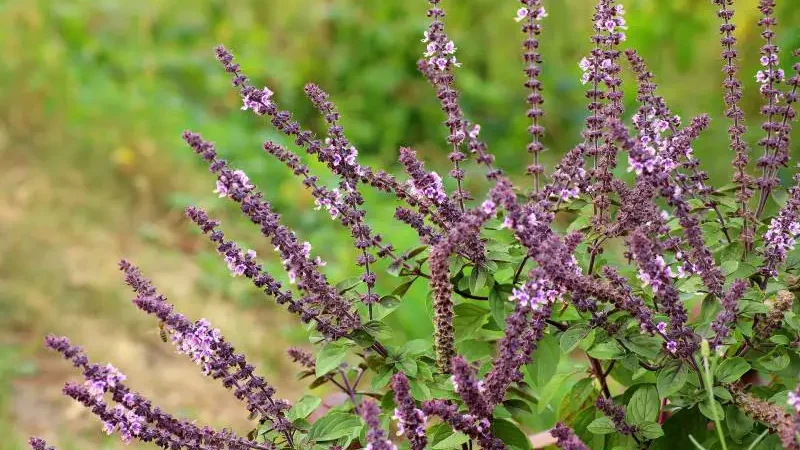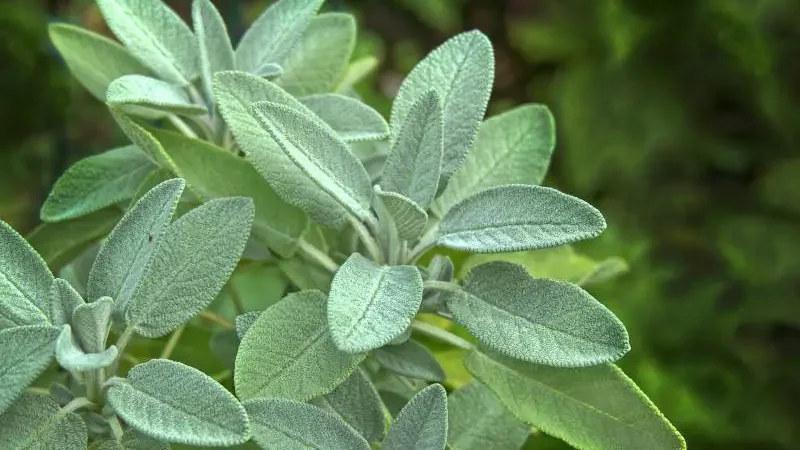Where Does Sage Grow?

Common Garden Sage is also known as Salvia Apiana, the White Sage, Bee Sage, or Sacred Sage.
Did you ever wonder where sage grows naturally and where it grows successfully in pots and herb gardens?
Perhaps you want to grow it in your garden, but you want to know if you have the right conditions.
This is the complete guide for where sage will grow effectively, including the ideal conditions.
Introduction To Sage
Sage is a kind of evergreen plant that grows throughout the year. The leaves and oil of the plant have numerous uses and a strong aroma.
In some parts of the world, sage is growing wild, while in other countries, you will need special conditions before you will be capable of growing sage successfully.
It is also a good bee attraction due to its aroma, aside from that, this plant has a lot of benefits. Along with essential minerals like magnesium, zinc, and copper, sage has a very high concentration of vitamin K.
Cancer-causing free radical molecules that are present in our environment are fought off by antioxidants.
In small amounts, sage contains antioxidant vitamins A, C, and E.
Where Does It Grow Naturally?
Sage is a plant that is growing naturally in many countries where you can go to a field and get some leaves, seeds, or roots without any problem.
The Mediterranean (southern) region of Europe and northern Africa is home to the desert herb known as sage.
Sage is growing wild in countries like the southwestern United States, northwestern Mexico, Southern California, Baja California, Mojave, and Sonoran deserts.
It is a sun-loving plant that is commonly found near limestone and in areas with shallow, dry, and rocky soil.
Sage has evolved to thrive in dry environments, so if the soil gets too wet, the roots will become saturated, and continued wetness will cause root rot and plant death.
Sage is usually between 1.5 and 2.5 feet tall due to its dry habitat. It does not grow very tall.
But, it doesn’t mean that you won’t be able to grow sage in your home if you don’t live there.
Can You Grow Sage In Gardens And Indoors?
The question you might have now is where you can grow sage if you don’t live in countries where sage is native. The good news is that you can grow sage anywhere if the conditions, especially the soil and temperature are favorable.
Even if you can grow sage indoors and outdoors, there are a couple of things that you need to take into consideration.
If you are living in a country where there’s not much sun, you might have problems with growing sage.
The same is true for places where it rains a lot and where the soil is always wet.

Sage prefers hot, humid weather and dry soil that isn’t getting rain or water all the time. The more sun the sage gets, the better the aroma and flavor. There are a few situations where indoor natural light is sufficient for Sage plants to grow well.
While you should make the most of the sun which is ideal for plants, this is not always possible.
Even though a very bright window can reduce your need for grow lights by half, you’ll still need one if you want to grow a lot of sage.
Known as “short-day,” which means they will shift their efforts to seed production if they detect more than 12 hours of darkness.
It is advisable that a timer should be set up and left on for at least 14 hours each day because we want to keep them in an earlier stage so we can continue harvesting the leaves.
Ideal Conditions For Successful Sage Growing
These are the optimal conditions for Sage, either indoors or outdoors:
- The soil must have good drainage. Make sure it doesn’t receive excessive watering. Plants require adequate drainage and air circulation to thrive.
- The pH level of the soil needs to be between 4.2 and 8.3. The higher the pH level, the better.
- Although sage will grow in very poor soils, improving the soil with compost and manure will help it grow more. To replicate the calcium levels of Mediterranean soil, add lime or dolomite to the soil.
- When you plant sage in a pot for indoor use, it has to be planted using high-quality potting soil and only watered when the soil is dry.
- You should place the plant in an area where the plant is getting as much sun during the day as possible.
- The afternoon sun is most preferred. The warmer it’s there, the better the sage will grow and the more flavor it will have.
- Warmer temperatures have an effect on sage plants as they tend to increase their metabolic rate, which is why they are referred to as “warm-weather crops,”. However, if it’s too hot, the plants will wilt and become more susceptible to disease. A temperature of around 70°F is ideal, but plants can thrive in anything from 60 to 80°F.
Tips When You Want To Grow Sage, No Matter Where You Live
No matter where you live, there are growing requirements for sage that you need to keep in mind to be able to get the most out of your plant.
When you are growing sage indoors, even in indigenous countries, you might need to make use of growing light. Especially if you are living in a home where sunlight exposure isn’t possible.
Without growing light or direct sunlight, you will fail to grow sage successfully. Watering is always a problem. Never give too much water to a sage plant. You will see that in the native countries where sage is growing wild, it is dry and hot most of the year.
Only give the sage water when the soil is completely dry and make use of soil that drains well. The final thing that you should know is that sage doesn’t adapt well to cold weather.
Even if you have sun most of the day. If you live in a cold place, even during the summertime, then sage might not grow successfully there.
Sage is native to countries like the southwestern United States, northwestern Mexico, Southern California, Baja California, Mojave, and Sonoran deserts.
Mostly dry and humid places where it doesn’t rain often. Nonetheless, it doesn’t mean that if you don’t live in these countries you can grow sage. The most important thing is the soil condition, the sunlight or full sun, and the water!